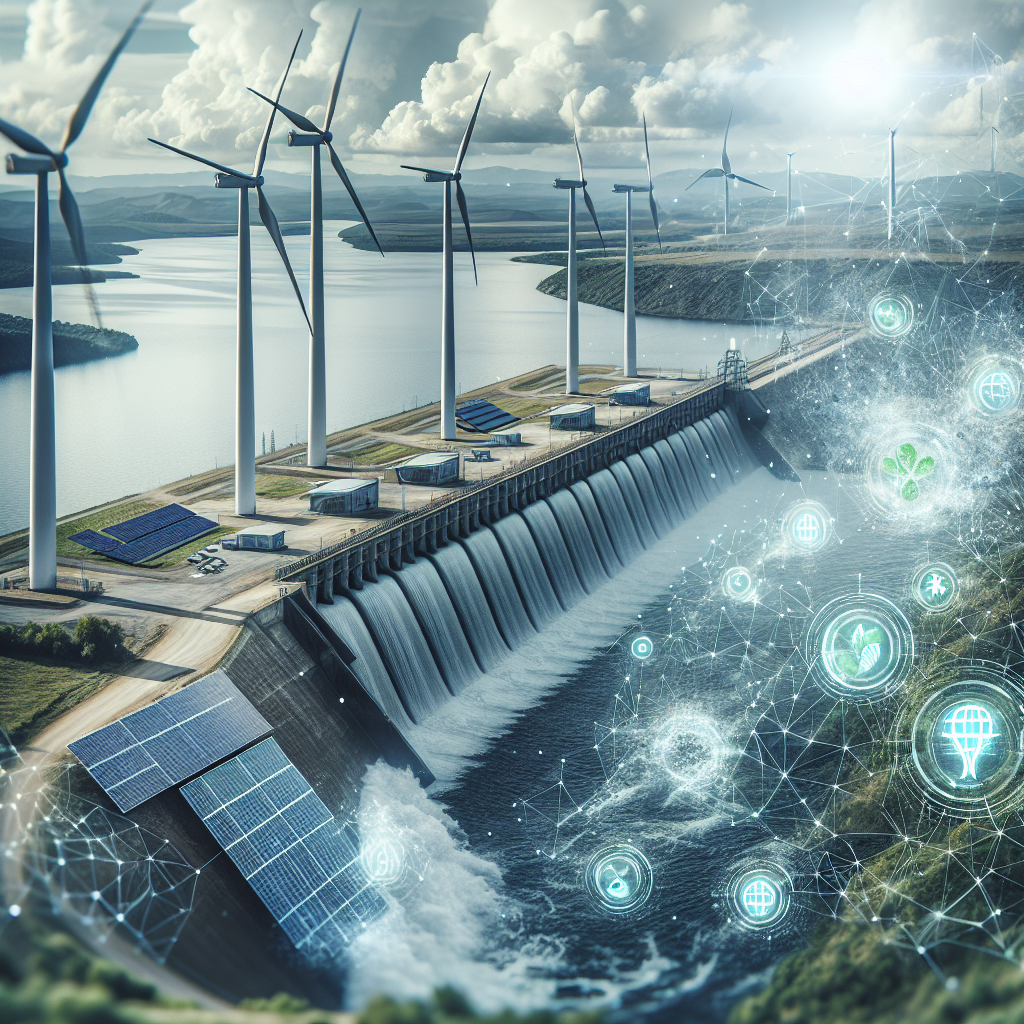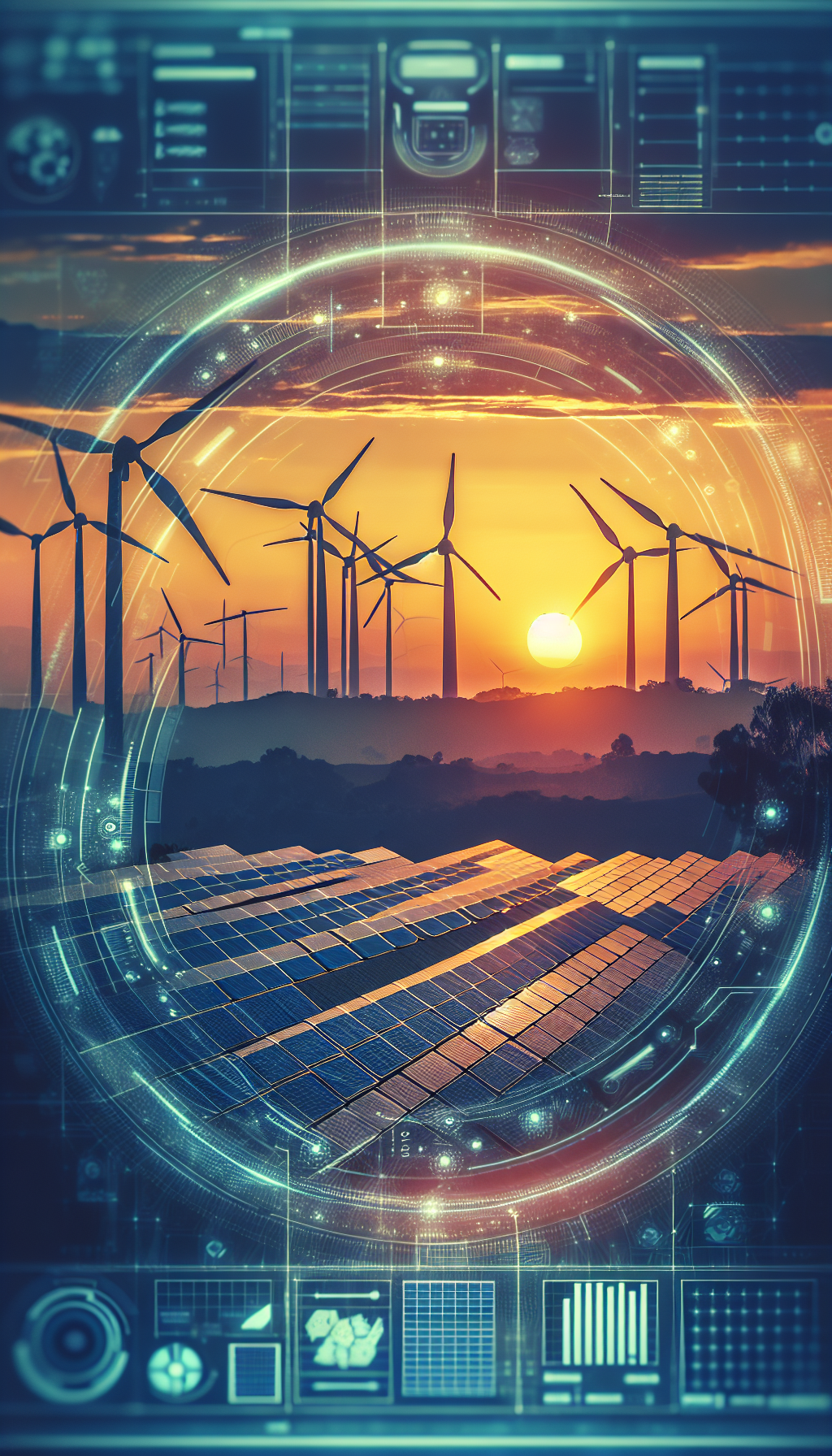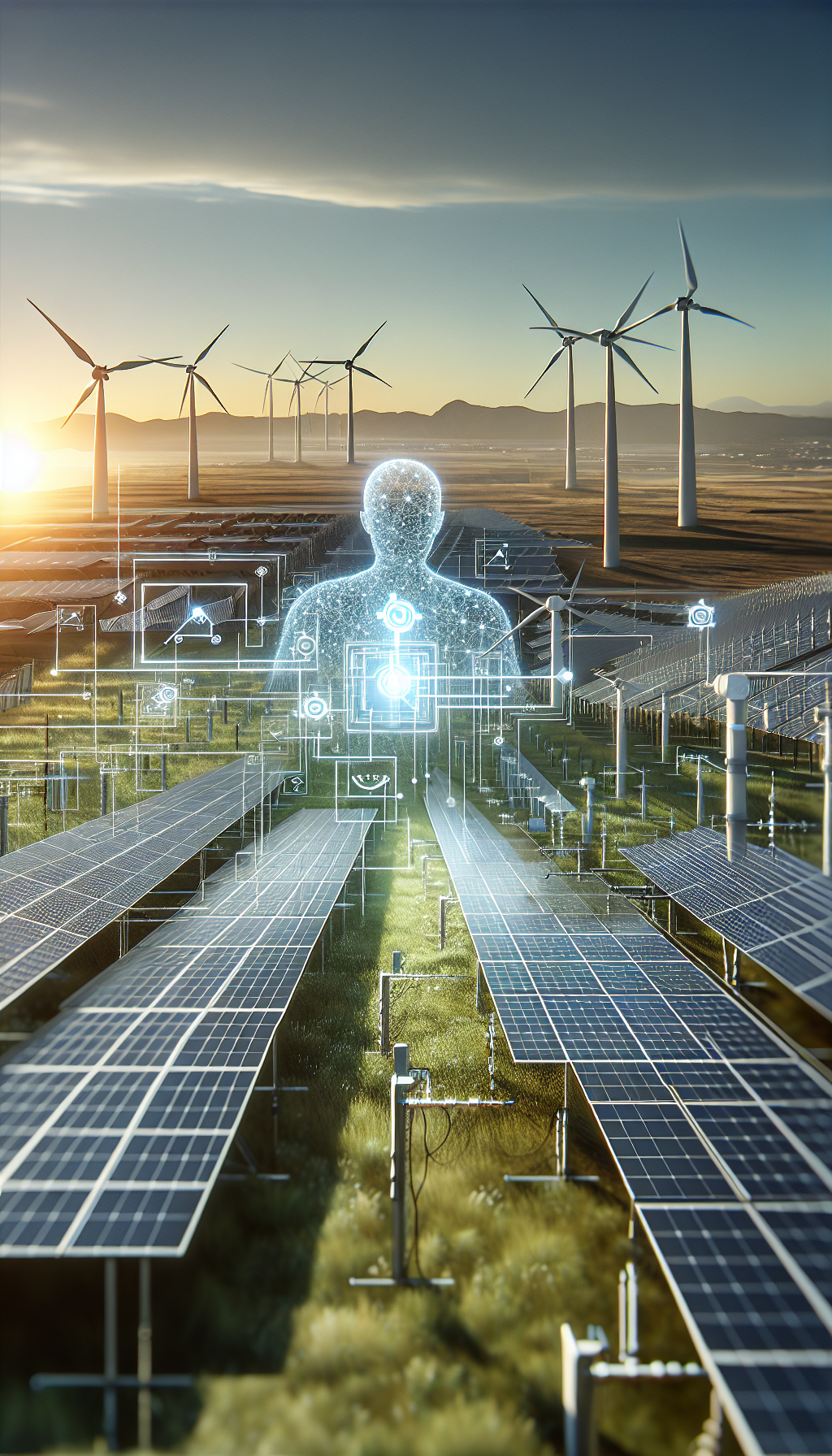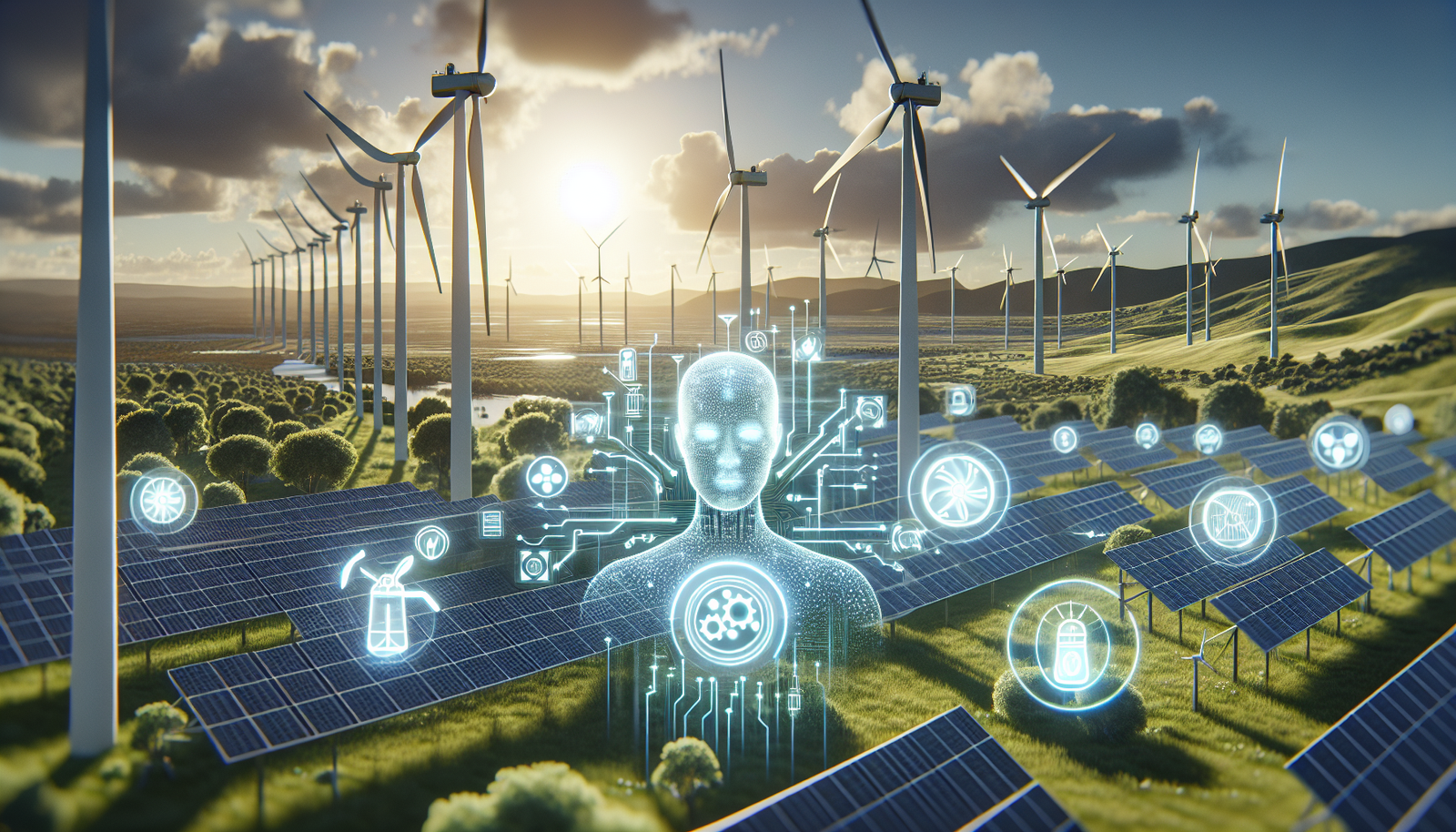The Role of Machine Learning in Renewable Energy
Machine Learning (ML) plays a pivotal role in revolutionizing the renewable energy sector. By utilizing advanced algorithms, ML is capable of processing vast amounts of data generated from solar panels, wind turbines, and other renewable sources. It analyzes this data to optimize the efficiency of energy production. For instance, in solar energy systems, ML can predict the optimal angle for solar panels by analyzing weather patterns, sunlight intensity, and historical performance data. This optimization leads to increased energy output and reduced costs.
Another significant role of ML in renewable energy is in predictive maintenance. ML algorithms can predict potential failures in energy systems before they occur. This is achieved by continuously monitoring equipment data, such as temperature, vibrations, and sound, to identify patterns that indicate wear and tear. Predictive maintenance not only reduces downtime but also extends the lifespan of equipment, contributing to overall cost savings. The following table illustrates the impact of predictive maintenance:
| Equipment | Traditional Maintenance Costs | Predictive Maintenance Costs |
|---|---|---|
| Wind Turbine | $100,000 | $70,000 |
| Solar Panel | $50,000 | $35,000 |
Furthermore, ML enhances the management of energy grids by balancing energy supply and demand. Smart grids utilize ML to adapt to changes in energy consumption patterns and integrate various renewable energy sources seamlessly. By forecasting energy demand and adjusting the distribution accordingly, ML ensures a stable and reliable energy supply. This capability is crucial in mitigating the variability and unpredictability associated with renewable energy sources.
In summary, the integration of machine learning in renewable energy systems not only optimizes operational efficiency but also paves the way for sustainable energy solutions. Through predictive maintenance, efficient energy management, and enhanced grid stability, ML contributes to a more resilient and cost-effective renewable energy infrastructure.
Predictive Maintenance for Wind Turbines
Predictive maintenance is a crucial application of machine learning in the field of renewable energy, particularly for wind turbines. By analyzing data from various sensors installed on the turbines, machine learning algorithms can predict potential failures before they occur, thus reducing downtime and maintenance costs. This proactive approach ensures that maintenance is performed only when necessary, optimizing the operational lifespan of the turbines.
Machine learning models utilize data such as vibration patterns, temperature readings, and rotational speeds to identify anomalies that may indicate wear and tear or impending failure. The implementation of these models allows for early detection of issues, which is vital in preventing unexpected breakdowns. The benefits of predictive maintenance extend beyond cost savings; it also enhances safety and reliability, ensuring a consistent energy supply.
A study conducted on a wind farm demonstrated the effectiveness of predictive maintenance through a reduction in unplanned maintenance events by 30%. The table below summarizes the key performance indicators before and after the implementation of machine learning-based predictive maintenance:
| Performance Indicator | Before Implementation | After Implementation |
|---|---|---|
| Unplanned Maintenance Events | 50 | 35 |
| Average Maintenance Cost | $100,000 | $70,000 |
| Operational Downtime (hours) | 200 | 140 |
In conclusion, predictive maintenance powered by machine learning not only optimizes the operational efficiency of wind turbines but also contributes significantly to the sustainability of renewable energy sources. By minimizing both the financial and environmental costs associated with traditional maintenance practices, machine learning is paving the way for a more resilient and cost-effective renewable energy infrastructure.
Solar Energy Forecasting and Machine Learning
Solar energy forecasting is a critical component in the efficient management of solar power systems. The variability in solar energy production, influenced by weather conditions, time of day, and seasonal changes, poses significant challenges for energy planners and grid operators. Machine learning offers sophisticated tools to tackle these challenges by providing accurate and reliable forecasts. By analyzing historical weather data and current atmospheric conditions, machine learning models can predict solar energy generation with remarkable precision, enabling better integration of solar power into the energy grid.
One of the primary advantages of using machine learning for solar energy forecasting is its ability to process vast amounts of data quickly. Traditional methods often fall short in handling the complex non-linear relationships found in weather data. In contrast, machine learning models such as neural networks and decision trees can identify patterns and correlations that are not immediately apparent. This leads to more accurate short-term and long-term forecasts, ultimately improving energy management strategies.
To illustrate the effectiveness of machine learning in solar energy forecasting, consider the following table that compares the accuracy of traditional statistical methods versus machine learning models:
| Forecasting Method | Accuracy (%) |
|---|---|
| Traditional Statistical Methods | 75 |
| Machine Learning Models | 90 |
Integrating machine learning into solar energy systems also facilitates the development of intelligent energy grids. These smart grids can dynamically adjust the distribution and storage of solar energy based on real-time forecasts, ensuring a consistent and reliable energy supply. This capability not only enhances the efficiency of solar energy utilization but also reduces reliance on fossil fuels, contributing to more sustainable energy solutions.
Enhancing Grid Management with AI
In the realm of renewable energy, grid management plays a crucial role in ensuring the stability and efficiency of power systems. The integration of artificial intelligence (AI) into grid management processes offers transformative potential. AI-driven solutions can effectively handle the complexities of modern energy grids, which are increasingly characterized by distributed energy resources such as solar panels and wind turbines. These solutions can optimize energy distribution, reduce losses, and improve the overall reliability of the grid.
One of the key advantages of using AI in grid management is its ability to predict energy demand and supply with high accuracy. By analyzing historical data and real-time inputs, AI models can forecast energy consumption patterns and renewable energy generation. This predictive capability allows grid operators to make informed decisions about energy storage and distribution. AI can also optimize the dispatch of energy resources, ensuring that power is delivered efficiently and cost-effectively. An example of this is the implementation of AI algorithms in smart grids, which can dynamically adjust to changing supply and demand conditions.
Moreover, AI enhances the grid’s resilience against disruptions. Machine learning algorithms can detect anomalies and potential faults in the grid infrastructure, enabling proactive maintenance and minimizing downtime. For instance, AI can monitor the performance of transformers and power lines, identifying areas that require attention before they lead to failures. This proactive approach not only extends the lifespan of grid components but also ensures uninterrupted power supply to consumers.
Additionally, AI facilitates the integration of renewable energy sources by managing the variability and intermittency inherent in these systems. Through advanced data analytics, AI can balance the input from various energy sources, maintaining a steady supply of electricity. This capability is crucial for maximizing the utilization of renewables and reducing dependency on fossil fuels. In summary, the application of AI in grid management not only enhances operational efficiency but also supports the transition to a sustainable energy future.
Machine Learning for Energy Consumption Optimization
Machine Learning (ML) plays a pivotal role in enhancing energy consumption optimization, particularly in the context of renewable energy sources. By leveraging advanced algorithms and data analytics, ML models can analyze vast amounts of consumption data to identify patterns and trends. These insights allow for precise forecasting and allocation of resources, ultimately reducing waste and improving efficiency. One of the key applications of ML in this area is the optimization of energy loads, which ensures that energy is consumed at times when production is at its peak, thus minimizing reliance on non-renewable energy sources.
Another crucial aspect of ML in energy consumption optimization is its ability to provide predictive maintenance. By analyzing historical and real-time data from energy systems, ML algorithms can predict potential system failures or maintenance needs before they occur. This proactive approach not only reduces downtime and maintenance costs but also ensures a consistent and reliable energy supply. The ability to predict and address issues before they escalate is invaluable in maintaining the efficiency and longevity of renewable energy systems.
Energy grid management is another area where ML contributes significantly. By processing data from various points within the grid, ML models can optimize the distribution of energy, balancing supply and demand in real-time. This dynamic management is crucial in preventing overloads and ensuring that energy is distributed where it is needed most. The integration of ML in grid management also facilitates the incorporation of diverse energy sources, including solar, wind, and hydroelectric power, making the grid more adaptable and resilient.
| Benefits of ML in Energy Consumption |
|---|
|
Smart Energy Storage Solutions
Smart energy storage solutions are pivotal in enhancing the efficiency and reliability of renewable energy systems. By leveraging machine learning algorithms, these systems can predict energy demand and supply fluctuations with remarkable accuracy. This predictive capability enables the dynamic management of energy storage, ensuring that excess energy generated during peak production times is stored efficiently and released during periods of high demand or low production. The optimization of these processes not only maximizes the use of renewable resources but also minimizes waste, contributing significantly to the sustainability of energy systems.
One of the key benefits of integrating machine learning into energy storage solutions is its ability to enhance the longevity and performance of storage technologies. For instance, machine learning models can analyze historical data to identify patterns and predict potential equipment failures or degradation. This predictive maintenance approach ensures that storage systems are maintained proactively, reducing downtime and maintenance costs. Moreover, machine learning can optimize the charge and discharge cycles of batteries, balancing load demands, and extending battery life.
Smart energy storage solutions also play a crucial role in grid management. By incorporating machine learning, grids can become more resilient to fluctuations in energy supply and demand. This is achieved through advanced algorithms that balance loads in real-time, ensuring a stable and reliable energy supply. The use of machine learning in this manner not only supports the integration of a higher percentage of renewable energy sources into the grid but also aids in the transition towards a more decentralized energy distribution system. This can be illustrated through a comparison of grid stability metrics before and after implementing smart storage solutions:
| Metric | Before Implementation | After Implementation |
|---|---|---|
| Grid Stability | Moderate | High |
| Renewable Energy Integration | 35% | 60% |
| Energy Losses | 15% | 5% |
The integration of machine learning in smart energy storage solutions not only addresses current challenges but also paves the way for future advancements. As these technologies continue to evolve, they hold the potential to revolutionize energy storage, making renewable energy sources more viable and widespread. The ongoing development and deployment of these systems are essential for achieving global sustainability goals and reducing reliance on fossil fuels.
AI in Bioenergy Production
Artificial Intelligence (AI) is increasingly being integrated into bioenergy production processes to enhance efficiency and sustainability. Bioenergy, derived from organic materials such as plants and waste, presents a viable alternative to fossil fuels. However, maximizing its potential requires sophisticated management of resources and processes, which is where AI comes into play. By leveraging machine learning algorithms, bioenergy production can be optimized to improve yield, reduce waste, and enhance the overall sustainability of energy systems.
Machine learning models can be used to predict the optimal conditions for biomass growth and conversion, thereby increasing the efficiency of bioenergy production. These models analyze vast datasets, including weather conditions, soil quality, and crop health, to make precise recommendations for maximizing biomass output. For instance, AI can help determine the best time for harvesting crops to ensure maximum energy yield. Additionally, machine learning techniques can optimize the conversion process of biomass into energy, ensuring that the process is both efficient and environmentally friendly.
Another significant application of AI in bioenergy is in the maintenance and monitoring of production facilities. AI-driven predictive maintenance systems can forecast equipment failures before they occur, minimizing downtime and repair costs. This is achieved by analyzing data from sensors installed on machinery and using it to predict potential issues. The implementation of such systems not only ensures continuous operation but also reduces the environmental impact associated with equipment failures and repairs.
Furthermore, AI can enhance the management of bioenergy grids by ensuring a balanced supply and demand. By analyzing consumption patterns and predicting future energy needs, AI systems can optimize the distribution of bioenergy, reducing waste and improving the reliability of energy supply. The integration of AI in bioenergy production, therefore, holds the promise of not only improving efficiency but also contributing significantly to the sustainability goals of renewable energy. The following table provides a summary of key AI applications in bioenergy production:
| AI Application | Function | Benefits |
|---|---|---|
| Predictive Modeling | Forecasts optimal conditions for biomass growth | Increases yield and efficiency |
| Predictive Maintenance | Anticipates equipment failures | Reduces downtime and repair costs |
| Grid Management | Balances supply and demand | Improves reliability and reduces waste |
Improving Hydroelectric Efficiency with ML
Machine learning (ML) is playing a pivotal role in enhancing the efficiency of hydroelectric power generation. By analyzing vast amounts of data from sensors and operational logs, ML algorithms can identify patterns and anomalies that are invisible to human operators. This capability allows for the optimization of water flow, turbine operations, and overall energy output. For instance, predictive models can forecast water inflow based on weather conditions and historical data, enabling operators to adjust the reservoir levels proactively, ensuring maximum efficiency during peak electricity demand periods.
One of the significant advantages of using machine learning in hydroelectric power is the ability to predict equipment maintenance needs before failures occur. This predictive maintenance approach reduces downtime and extends the lifespan of critical components. Machine learning models analyze data from vibration sensors, temperature gauges, and other monitoring devices to detect early signs of wear and tear. As a result, operators can schedule timely maintenance, preventing unexpected breakdowns and maintaining continuous energy production.
Furthermore, machine learning assists in the management of energy grids connected to hydroelectric plants. By optimizing the integration of hydroelectric power with other renewable energy sources, such as solar and wind, ML algorithms ensure a stable and reliable power supply. This is achieved through real-time adjustments in energy distribution, load forecasting, and demand response strategies. The implementation of ML in this context not only enhances efficiency but also contributes to the reduction of carbon emissions by promoting the use of clean energy sources.
| ML Application | Benefit |
|---|---|
| Predictive Inflow Management | Optimizes water reservoir levels to maximize energy output during peak demand. |
| Predictive Maintenance | Reduces equipment downtime and extends lifespan through early fault detection. |
| Grid Management | Ensures stable power supply and integrates with other renewable sources for efficiency. |
In summary, the integration of machine learning into hydroelectric power systems represents a significant advancement in renewable energy optimization. By improving operational efficiency, enabling predictive maintenance, and optimizing grid management, ML technologies contribute to a more sustainable and reliable energy future. As technology continues to evolve, the potential applications of machine learning in hydroelectric power will likely expand, offering even greater benefits to the energy sector and the environment.
Real-time Data Analytics for Renewable Energy
Real-time data analytics plays a pivotal role in optimizing renewable energy systems. By leveraging machine learning algorithms, it is possible to analyze vast amounts of data generated from renewable energy sources such as solar panels and wind turbines. The continuous monitoring of these systems allows for the identification of patterns and anomalies that can significantly enhance the efficiency and performance of energy production.
One of the key benefits of real-time data analytics is its ability to predict equipment failures before they occur. Through the use of predictive maintenance models, energy providers can anticipate the need for repairs and maintenance, thereby reducing downtime and extending the lifespan of equipment. This proactive approach not only improves operational efficiency but also reduces costs associated with unexpected failures.
Moreover, real-time analytics facilitate the effective management of energy grids. By analyzing data in real time, energy providers can balance supply and demand more efficiently, ensuring a stable and reliable energy distribution. The integration of machine learning models enables the dynamic adjustment of energy flows based on current conditions, thus optimizing the use of renewable energy sources.
To illustrate the impact of real-time analytics, consider the following table that outlines potential improvements in renewable energy systems:
| Aspect | Traditional Systems | With Real-time Analytics |
|---|---|---|
| Efficiency | Moderate | High |
| Downtime | Frequent | Reduced |
| Cost | High | Lower |
| Energy Distribution | Static | Dynamic |
In conclusion, the adoption of real-time data analytics in renewable energy systems offers substantial benefits. By enhancing efficiency, reducing operational costs, and improving grid management, machine learning-driven analytics pave the way for more sustainable and reliable energy solutions.
Challenges and Ethical Considerations
Implementing machine learning in the realm of renewable energy optimization comes with its own set of challenges and ethical considerations. One of the primary challenges is the quality and availability of data. High-quality, comprehensive datasets are crucial for training effective machine learning models. However, data from renewable energy sources can be inconsistent due to varying weather conditions, geographic differences, and intermittent energy generation. This variability can lead to challenges in creating models that are robust and reliable across different situations.
Another significant challenge is the integration of machine learning models with existing energy infrastructure. Many energy systems were not originally designed to accommodate advanced analytics, making it difficult to retrofit these systems with new technologies. This integration requires substantial investment in both time and resources, and there is often resistance from stakeholders who are accustomed to traditional methods. Additionally, the lack of standardized protocols for deploying machine learning in energy systems exacerbates these integration challenges.
On the ethical front, data privacy and security are of paramount concern. The use of machine learning in energy systems often involves the collection and analysis of large amounts of data, some of which may be sensitive or personal. Ensuring that this data is handled in a manner that respects privacy and complies with relevant regulations is crucial. Moreover, there is the risk of algorithmic bias, where models may inadvertently favor certain outcomes based on the data they are trained on, potentially leading to unfair or discriminatory practices.
Finally, there are broader ethical implications related to job displacement and economic impact. As machine learning technologies become more prevalent in the energy sector, there may be a reduction in demand for certain jobs, particularly those that involve routine monitoring and maintenance tasks. It’s important to address these potential disruptions by investing in retraining programs and ensuring that the transition to more automated systems is managed in a way that is socially responsible. Balancing the benefits of technological advancement with the potential societal impacts is a critical consideration for policymakers and industry leaders alike.
Future Trends in AI for Renewable Energy
The integration of artificial intelligence in renewable energy systems is set to transform the sector significantly. Machine learning algorithms are increasingly being used to enhance the efficiency of energy generation and distribution. As technology advances, we can expect AI to play a pivotal role in automating and optimizing energy grids. This will not only improve grid stability but also reduce operational costs, making renewable energy more competitive with traditional energy sources.
One of the most promising trends is the use of predictive analytics to anticipate equipment failures and maintenance needs. By analyzing historical data and identifying patterns, AI can predict when a component is likely to fail, allowing for proactive maintenance scheduling. This minimizes downtime and extends the lifespan of renewable energy infrastructure. Moreover, AI-driven predictive maintenance can lead to cost savings of up to 20%, as highlighted in recent industry reports.
Another emerging trend is the application of machine learning in energy demand forecasting. Accurate demand forecasts are crucial for balancing supply and demand, which is particularly challenging with the variable nature of renewable energy sources like wind and solar power. Advanced AI models can analyze a vast array of data, including weather patterns and historical consumption data, to generate precise demand predictions. This helps in optimizing the energy storage and distribution processes, ensuring that energy is available when and where it is needed.
Furthermore, AI is expected to facilitate the integration of distributed energy resources (DERs) into the grid. With the increasing adoption of technologies such as solar panels and electric vehicles, there is a growing need for intelligent systems that can manage these resources efficiently. AI can optimize the operation of DERs by analyzing real-time data and making decisions that enhance grid reliability and efficiency. As the renewable energy landscape evolves, AI will undoubtedly be a key driver in achieving sustainable energy solutions.



